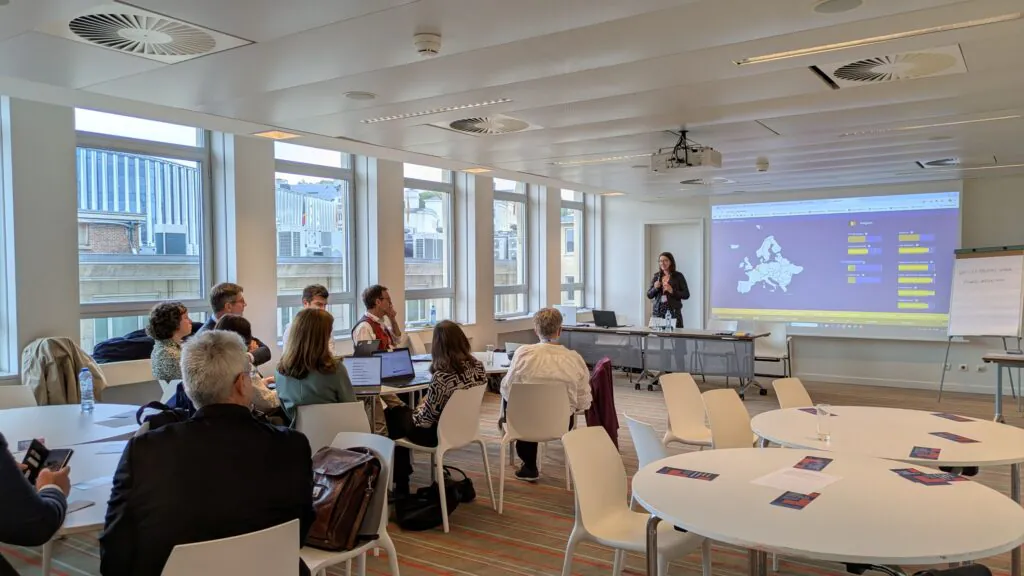A contribution by Carla Lostrangio (AEIDL)
The recently appointed European Commission has just announced the Competitiveness Compass, and the intended set of legislative and non-legislative activities it will undertake in 2025. This news provides an overview of both items and how they are likely to strenghten (or not) innovation of rural communities.
By Carla Lostrangio, EU Association for Innovation in Local Development
The EU focus on innovation and competitiveness
In December 2024, the new European College of Commissioners entered into force chaired by the EC President Von der Leyen. Von der Leyen, confirmed for a second mandate at the EU Commission, issued a set of priorities for each of the Commissioners in line with the Strategic Agenda of the Council of the EU.
Innovation emerge as one of the key priorities of the EU Commission until 2029. As emerged from the Draghi and Letta reports, Europe lags behind other world countries in terms of innovation in key strategic sectors, including breakthrough technology and clean industry. As a result, the newer EU Commission recalls the importance of increasing competitiveness in our continent and close the innovation gap with other global players.
In line with this priorities, already by January 29th, the European Commission presented its Competitiveness Compass, which outlines Europe’s strategy to address this innovation gap. Two weeks later, the European Commission Work Programme presents the list of initiatives and legislative files that will be issued in 2025.
Closing the Innovation Gap
“The Compass’ goal is to nurture Europe’s innate strengths, harness its resources and remove the barriers at European and national level”
(EU’s Competitiveness Compass)
Closing the innovation gap is one the three main flagship initiatives under the EU’s competitiveness Compass. Under this line, the EU aims at boosting young innovative start-ups, promoting industrial leadership in high growth sectors and supporting the diffusion of technologies across existing companies and SMEs. It also aims to simplify making business in Europe with the creation of an ‘European’ legal status for firms, the so-called 28th regime.
Yet, this strategic document completely overlooked at territorial dimension of the innovation gap. Europe’s innovation varies broadly across countries and regions, and rural innovation is often governed by different mechanisms and patterns as underlined by the Joint Research Centre. Unfortunately, it is not clear how the newest strategy for innovation and the upcoming EU Competitiveness Fund while continue supporting rural areas and not occurring at its own detriments.
The European Commission’s initiatives to watch out
Europe’s support to innovation and practical roll-out will depend on the legislative and non-legislative activities undertaken in the coming months by the Commission and there discussion with co-legislators. This is an incredible opportunity for rural actors to make their voice to be heard and not be missed in this discussion.
Below the key dates for scoping Europe’s support to rural innovation and digitalisation:
- Union of Skills (non-legislative, Q1 2025)
- Vision for Agriculture and Food (non-legislative, Q1 2025)
- Single Market Strategy (non-legislative, Q2 2025)
- EU Start-up and Scale-up Strategy (non-legislative, Q2 2025)
- Sustainable Transport Investment Plan (non-legislative, Q3 2025)
- Quality jobs roadmap (non-legislative, Q4 2025)
- Digital Networks Act (legislative, incl. impact assessment, Q4 2025)
- Digital Package (legislative incl. impact assessment, Q4 2025)
- European Business Wallet (legislative, incl. impact assessment, Article 114 TFEU, Q4 2025)
- Bioeconomy Strategy (non-legislative or legislative, Q4 2025)
In addition, by autumn 2025, the European Commission will present its proposal for the Post-2027 Multiannual Financial Framework. A consultation on the future of the Common Agricultural Policy and the Cohesion Policy is expected in the coming months.
SMART ERA’s contribution to innovation policies
In the SMART ERA project, AEIDL is leading the mapping of policies supporting smart community-led innovation in rural areas at European level and across Pilot countries (Finland, Slovenia, Spain, Italy, Bulgaria and Bosnia-Herzegovina). Our policy mapping will be used to inform policymakers on how to ensure the Europe’s policy and next MFF negotiations are fit to support innovation in rural areas.
To this end, SMART ERA will use its policy findings to contribute to the European Commission’s consultations, such as the one on the future of the EU’s budget and on the revision of the Public Procurement Directives.
The outputs of SMART ERA policy mapping will be available in a report by early 2026.





